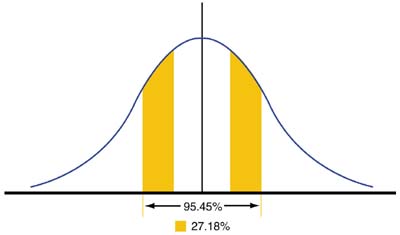


The standard deviation, which measures the spread of the data, is 3.5 (rounded to 1 decimal place). This falls unsurprisingly on the midpoint of the range -5 to 7. (b) The average of the 10,000 numbers is 1.0 (rounded to 1 decimal place). The following histogram shows the count of values for our 10,000 uniform random numbers, and as expected, we see an almost equal representation of every value in the range. This is clearly NOT a normal distribution (also known as the Bell curve), in which values cluster around the average - in a uniform distribution, the average value appears just as frequently as any other value in the range. A uniform distribution means that each value between -5 and 7 has equal chance of appearing. (a) I generate 10,000 random numbers between -5 and 7 from a uniform distribution. (Warning: this is a rather long read that is more technical than usual.) Let me first show you a quick counter-example, then provide some intuition around the standardization procedure. Standardization of a dataset is a common requirement for many machine learning estimators: they might behave badly if the individual features do not more or less look like standard normally distributed data (e.g. This myth is found explicitly in the Python documentation on the StandardScaler method in the popular Scikitlearn package ( link): One popular myth says that standardizing variables is to make them normal.
BELL CURVE SQUEED PROFESSIONAL
This template will take its rightful place in your collection of professional presentations.There are lots of myths in data science which are repeated endlessly on social media and the internet. All slides of the Bell Curve Graph template are easy to edit and can be used with other slides in your presentations.Īlso, this template can be used by business trainers when preparing their courses on marketing and financial topics. The last slide can be used by product managers when preparing a model for the product life cycle. Also, this slide can be used by investment companies when analyzing the stock exchange. The third slide will be useful for startups when preparing a lead analysis. Marketers can use this slide to prepare a lead allocation model for serving ads across different distribution channels. The next slide can be used to analyze your social media followers. The slide will be useful for statisticians and financial analysts in their daily work. The first slide of the template gives you the opportunity to describe your data in the following five categories – Innovation, Early Adopters, Early Majority, Late Majority, Laggards. A fatter tail that skews negative signals to investors that there is a greater probability of negative returns.īell Curve Graph consists of four slides that are in dark colors. Non-normal distributions have fatter tails than a bell curve normal probability distribution. It is feasible for stocks and other securities to sometimes display non-normal distributions that fail to resemble a bell curve. The normal probability distribution assumption doesn’t always hold true in the financial world, however. Investors use the normal probability distribution of a stock’s past returns to make assumptions regarding expected future returns. In finance, standard deviations that depict the returns of a security are known as volatility.įor example, stocks that display a bell curve usually are blue-chip stocks and ones that have lower volatility and more predictable behavioral patterns. Financial analysts and investors often use a normal probability distribution when analyzing the returns of a security or of overall market sensitivity. The mean, in turn, refers to the sum of all data points in the data set or sequence and will be found at the highest point on the bell curve. The width of the bell curve is described by it is standard deviation.Ī standard deviation is a measurement used to quantify the variability of data dispersion, in a set of given values around the mean. All other possible occurrences are symmetrically distributed around the mean, creating a downward-sloping curve on each side of the peak. It is mean, mode, and median in this case.
BELL CURVE SQUEED SERIES
The highest point on the curve, or the top of the bell, represents the most probable event in a series of data. The term bell curve originates from the fact that the graph used to depict a normal distribution consists of a symmetrical bell-shaped curve. A bell curve is a common type of distribution for a variable, also known as the normal distribution.


 0 kommentar(er)
0 kommentar(er)
